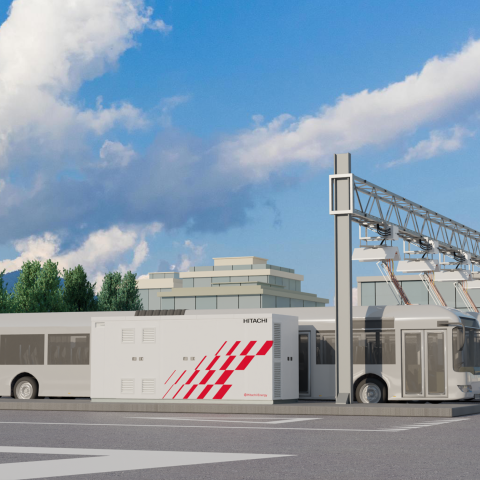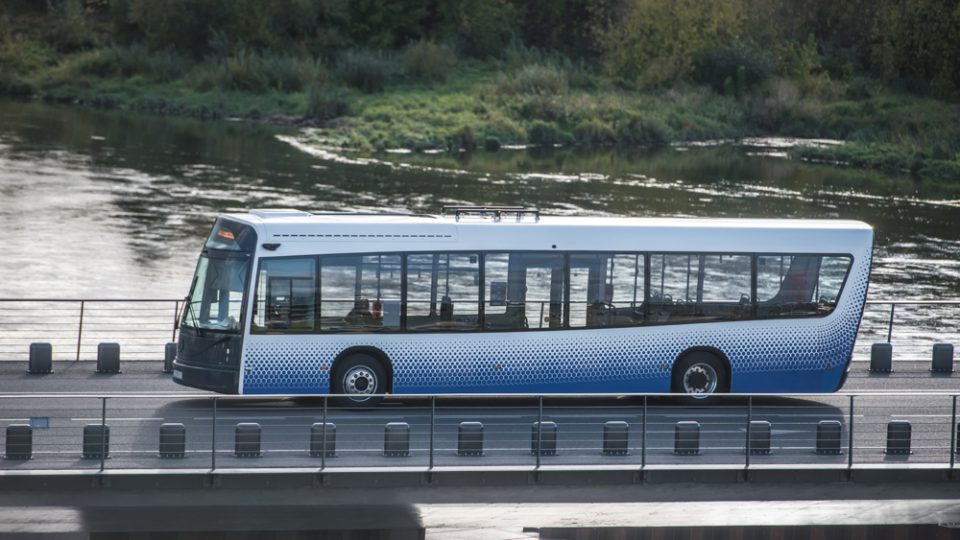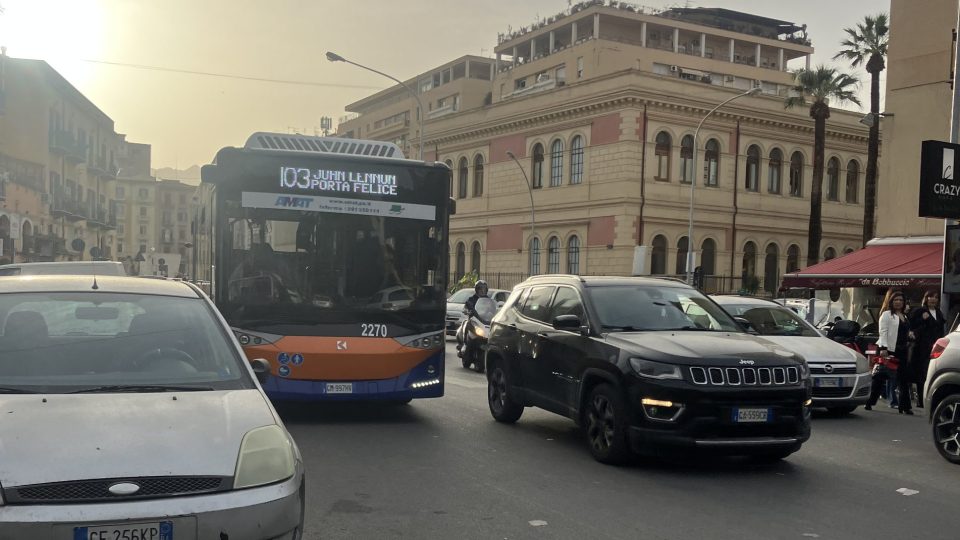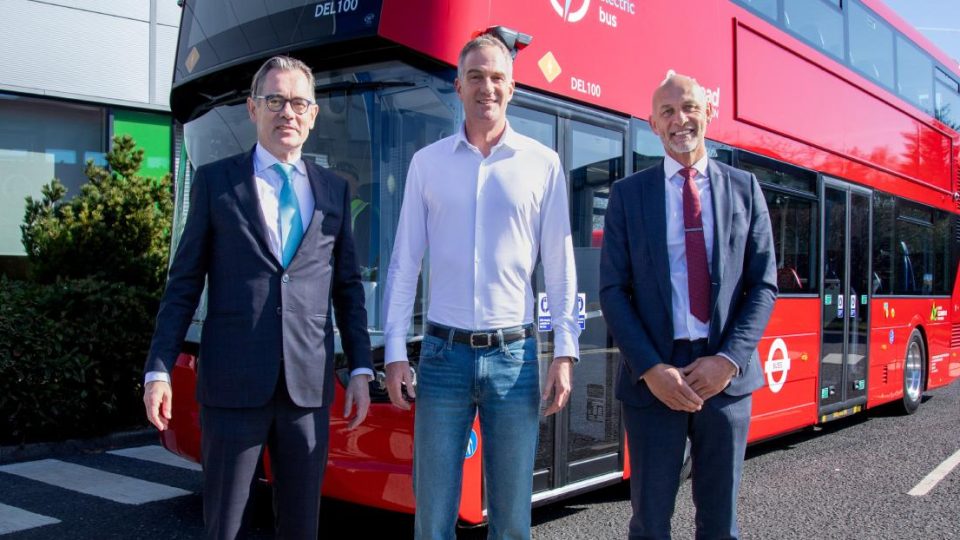Preparing grids for EV buses to enable a sustainable future. A contribution by Anthony Allard, Hitachi Energy Head of North America
Below, a contribution byAnthony Allard, EVP, Head of North America, Hitachi Energy The recent government mandates and funding for projects focused on sustainability and greenhouse gas reductions give operators of public transit fleets more motivation than ever to consider transitioning their fleets to electric vehicles (EVs). Recently, the U.S. Federal Government allocated $7.5 billion for […]

Below, a contribution by
Anthony Allard, EVP,
Head of North America, Hitachi Energy
The recent government mandates and funding for projects focused on sustainability and greenhouse gas reductions give operators of public transit fleets more motivation than ever to consider transitioning their fleets to electric vehicles (EVs). Recently, the U.S. Federal Government allocated $7.5 billion for EV chargers, $5 billion for EV buses, $5 billion for electric and low-emission school buses, and $3 billion to support domestic battery manufacturing – all geared toward driving the electrification of transportation. Not only is this financial support meant to reduce the carbon footprint of public fleets, but it can also bring cost and efficiency benefits to public transit organizations.
While the future of EVs looks promising, the transition to battery-powered bus fleets will require the development of substantial new EV charging infrastructure and will also require upgrades to the nation’s electric grid.

Funding for EV Buses Drives Down CO2 Emissions for a Sustainable Future
The transportation sector accounts for approximately 27% of overall greenhouse gas (GHG) emissions. Addressing this important source of emissions is critical to meeting GHG reduction goals. The electrification of public transit fleets (buses account for about 7% of overall transportation-related emissions) presents an opportunity to achieve rapid reductions in the sector, help improve urban air quality, and tend to have lower maintenance and fuel costs. As important, many public transit organizations are subject to government mandates around emission reductions and transitioning to EV operations is a natural fit.
Government plays a particularly significant role in this process, as both a source of funding for municipal and regional transit organizations as well as a driver of regulatory requirements. They also have a role as a facilitator of engagement between local utilities and public transit agencies, where they can help ensure sufficient power supply to meet public fleet charging needs. Many governments see the transition of public transit fleets to EVs as a way to encourage broader commercial EV adoption. In addition to offering encouragement, governments can also provide direct incentives for public and private investment in needed upgrades.
Ensuring Successful Implementation
In order to achieve a successful, wide-scale deployment of electric bus fleets, fleet owners will have to overcome a number of organizational and infrastructure challenges. While much of the public discussion of EVs has been on the vehicles themselves, the commitment must go well beyond buses to supporting infrastructure. For example, transit authorities will need to ensure that they can meet the charging needs of their growing fleet with dedicated EV charging systems. In the case of fleets, installing individual chargers may not be the ideal approach, so longer-term planning and exploration of solutions designed specifically for fleets and terminal or depot environments is an important consideration.
Fleet operators will also likely need to operate both internal combustion engine vehicles and EVs in parallel for years to come, perhaps decades. This means that EVs and charging infrastructure needs to be integrated with systems used for vehicle telematics, routing and dispatching vehicles, managing maintenance requirements, etc. Fleet owners also need to be able to calculate vehicle energy consumption and implement an effective scheduling program to ensure maximum vehicle availability, while taking advantage of optimal time-of-day fuel (electricity) pricing.
Fleet owners also need to monitor battery life data, vehicle state-of-charge, route data, traffic simulations and depot scheduling in order to ensure efficient EV charging infrastructure utilization, and energy storage optimization. Addressing these needs could require investment in upgrades to existing IT systems. At a minimum, it will require extensive and careful planning.
The Accelerated Demand for Grid Capacity
While increased funding will support the demand for EVs and have a significant positive impact on the carbon footprint of commercial transit fleets, there are challenges that must be addressed to support growth in EV bus use in the U.S.
Public transit agencies need to work with local utilities to ensure that their charging needs can be met. Bus depots, depending on their size, could become ‘megawatt-level’ electricity customers as they install and utilize charging infrastructure to support their growing EV fleets.
A recent study conducted by Hitachi Energy and National Grid, which focused on the impact of commercial fleet (trucks/vans) electrification on power grids, showed that concentrations of fleet charging infrastructure and loads in particular geographic areas could overload distribution feeders, and generally put pressure on grids. With bus terminals often located in commercial/industrial zones of cities, public transit agencies could also experience challenges accessing sufficient power supplies to meet their high-power EV charging infrastructure needs.
Bus fleet operators also need to consider how best to deploy EV charging infrastructure. Most bus terminals are very limited in terms of square footage, so installing individual chargers at each vehicle parking slot is unlikely to be a practical option. Public transit agencies need to consider large-scale, fast-charging, high-power infrastructure that can be optimized to their charging schedules and space limitations. Solutions are available to meet this need, but decisions should take long-term scale requirements into consideration early in the process. Addressing these concerns must be a priority as we seek to accelerate the introduction of EV buses.
Conclusion
Increased funding for EV buses is an exciting step toward enabling widespread, sustainable public transportation. However, investments in EV buses must be accompanied by necessary infrastructure investments, clear policies, and support for needed upgrades to the power grid. Modernizing the electric grid will require the collaboration of federal, state, and local organizations, and cooperation between public transit agencies, technology suppliers, vehicle OEMs and power utilities. With these steps in mind, public transport fleet owners have great potential to embrace EV buses and significantly decrease carbon emissions in the transportation industry.







